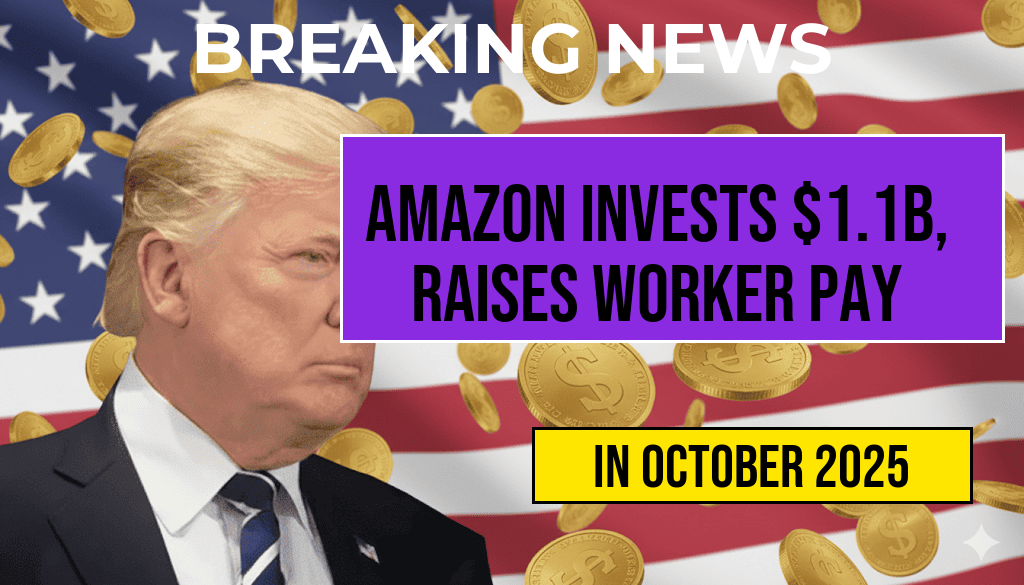Amazon has announced a substantial $1.1 billion investment aimed at enhancing its fulfillment operations, resulting in a significant boost to worker compensation. The company revealed that this funding will directly increase the average pay for its fulfillment center employees to over $23 an hour. This move underscores Amazon’s ongoing efforts to address workforce concerns amid rising labor costs and competitive pressures within the logistics sector. The investment is expected to impact thousands of workers across multiple facilities nationwide, signaling a strategic shift toward improved wages and working conditions. As warehouse labor markets tighten and public scrutiny of corporate labor practices intensifies, Amazon’s latest initiative highlights its commitment to retaining talent and maintaining its market dominance through competitive compensation packages.
Details of the Investment and Wage Increase
Amazon’s $1.1 billion capital infusion will be allocated toward wage enhancements, upgrading working conditions, and expanding benefits for fulfillment center employees. The company reports that this initiative is part of a broader strategy to ensure its workforce remains competitive amidst industry-wide labor shortages. Specifically, the company noted that the average hourly pay for fulfillment workers will now surpass $23, a notable increase from previous figures that hovered in the low twenties. This adjustment aligns with Amazon’s broader goal of providing a living wage in the regions it operates.
Scope of the Wage Increase
| Period | Average Hourly Pay | Number of Employees Affected |
|---|---|---|
| Pre-Investment | $21.50 | Approximately 250,000 |
| Post-Investment | $23.00+ | Estimated 350,000 |
Sources close to Amazon suggest that the wage increase will be phased in over the coming months, with specific adjustments tailored to regional labor markets. Additionally, the company emphasizes that these pay raises are part of a comprehensive effort to improve overall employee well-being, including enhancements to health insurance options, paid time off, and career development programs.
Industry Context and Competitive Response
Amazon’s decision arrives amid heightened competition for logistics talent, with retailers and courier services elevating wages to attract and retain workers. According to industry analysts, fulfillment centers have become critical battlegrounds for labor, especially as consumer demand for rapid delivery continues to grow. The company’s move to increase wages aligns with recent trends where major players like Walmart and FedEx have announced similar initiatives to address labor shortages and improve employee satisfaction.
Impact on the Broader Logistics Sector
- Enhanced wages are likely to set new benchmarks for fulfillment industry compensation standards.
- Potential ripple effects may influence wages in related sectors such as transportation and last-mile delivery services.
- Labor unions and advocacy groups have welcomed the move, viewing it as a positive step toward fairer pay practices in warehousing.
Corporate Strategy and Public Perception
Amazon’s investment comes at a time when public scrutiny over working conditions in fulfillment centers remains high. Critics have long pointed to issues such as high productivity expectations and physically demanding work environments. By increasing wages, Amazon aims to bolster its reputation and mitigate criticism, positioning itself as a more attractive employer in a competitive labor market.
Broader Implications for Amazon
- Improved employee retention and reduced turnover costs.
- Enhanced ability to attract skilled workers amid labor shortages.
- Potential for increased operational efficiency due to a more motivated workforce.
Industry experts note that this investment underscores Amazon’s strategic balancing act—driving growth while addressing labor concerns. The company’s commitment to investing in its workforce could influence industry standards and set a precedent for other logistics firms seeking to improve worker compensation and satisfaction.
For further insights into Amazon’s operational strategies and labor practices, visit Wikipedia’s entry on Amazon or review recent coverage from Forbes.
Frequently Asked Questions
What is the total amount Amazon is investing in its fulfillment workforce?
Amazon is investing 1.1 billion dollars to enhance its fulfillment operations and workers’ compensation.
How has Amazon’s investment affected fulfillment workers’ average pay?
The investment has helped boost the average pay for fulfillment workers to over twenty-three dollars an hour.
Which areas are likely to benefit from Amazon’s increased investment?
The investment primarily benefits fulfillment centers and warehouse workers, improving pay and working conditions.
Does this investment indicate Amazon’s commitment to worker welfare?
Yes, the significant financial investment demonstrates Amazon’s commitment to improving wages and supporting its fulfillment workforce.
When did Amazon announce this investment and pay increase?
Details about the exact timing are not specified in the article, but the investment and pay boost are recent developments aimed at enhancing worker compensation.






